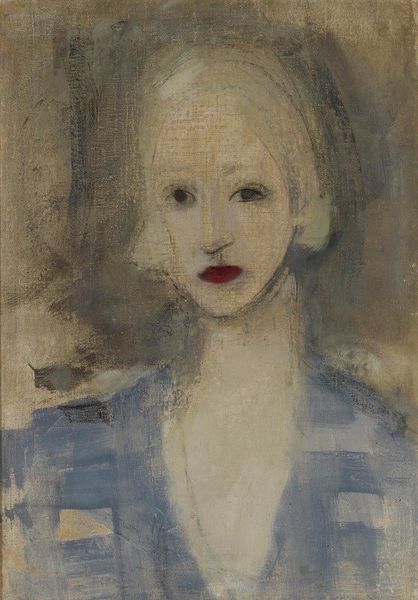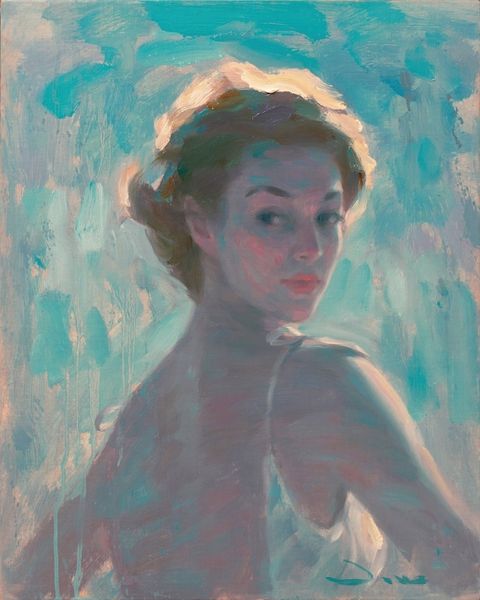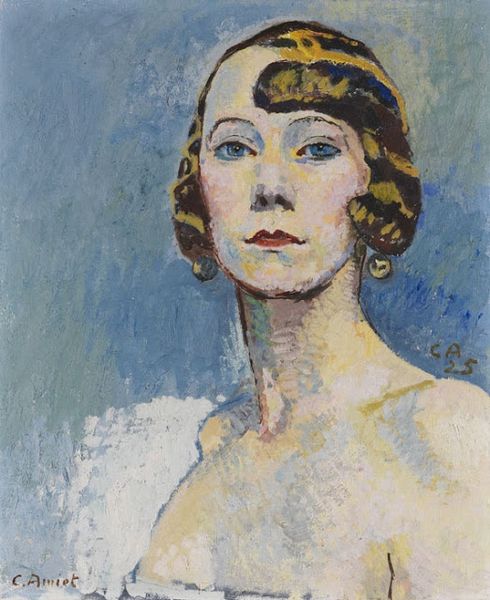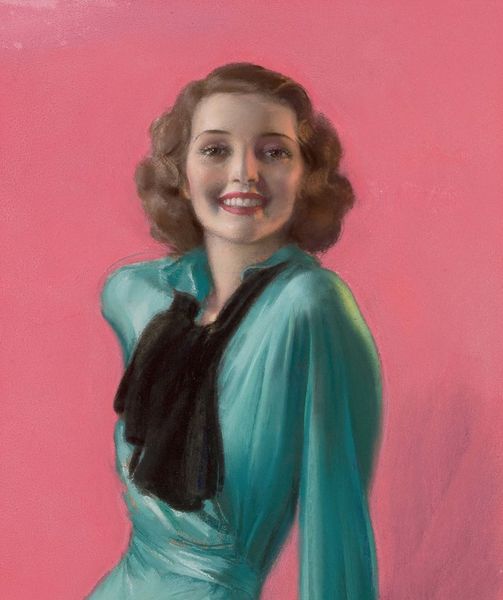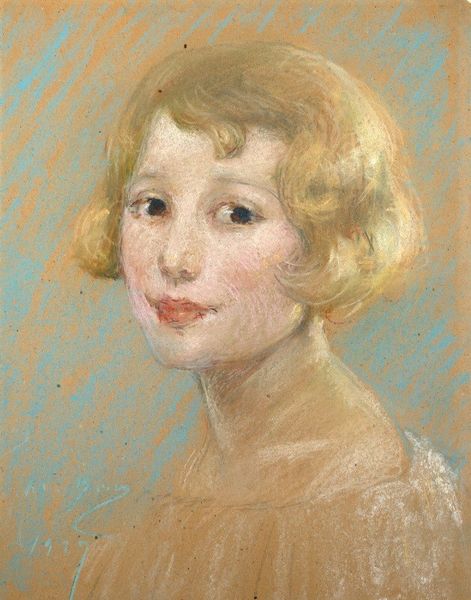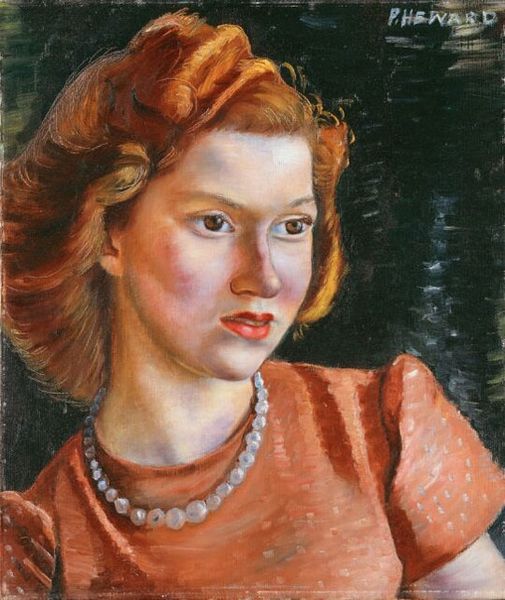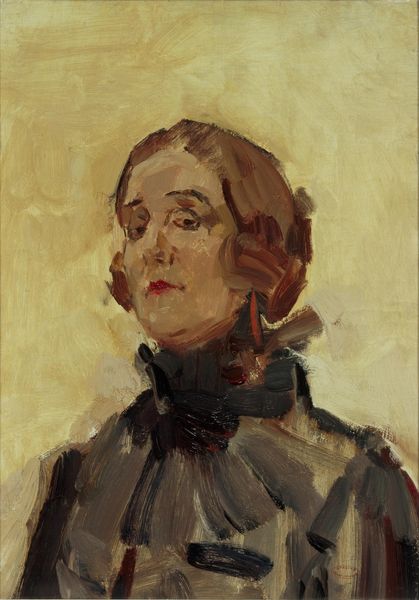
painting, oil-paint
#
portrait
#
painting
#
oil-paint
#
modernism
#
realism
Copyright: Tamara de Lempicka Estate LLC
Curator: Tamara de Lempicka painted "Portrait of Kizette Adult II" in 1955, using oil paint on canvas. What strikes you about it? Editor: She looks both vulnerable and guarded, perhaps even a little weary. It's quite striking how those pale grey-blue eyes and the curve of the eyebrow convey so much with so little overt drama. Curator: Lempicka's command of form and line certainly communicates volumes, doesn't it? Observe the smooth, almost porcelain-like rendering of the skin juxtaposed with the textured impasto of the hair. It creates a compelling tension. Also note the subtle asymmetry across the painting. Editor: I see that now. The portrait's realism feels deliberate, and this is complicated when one considers that Lempicka often lived within queer communities. Could this style represent a yearning for acceptance, given the political landscapes of the mid-20th century? Curator: An interesting point! I'm especially interested in her ability to combine the starkness of modernism with elements of realism, creating a timeless quality while still very much capturing an era through compositional choices and artistic application. Look how the lines soften toward the lower edge of the frame; it keeps the piece approachable rather than distancing. Editor: Exactly, Lempicka had complex ideas about beauty and she also had a daughter who was sent away as a child to live with her grandmother, due to the artist’s unconventional bohemian lifestyle. Curator: Indeed. There's a unique harmony in how it reconciles these approaches, using composition to amplify rather than flatten depth and dimensionality. Editor: By situating Lempicka and her artwork within her complex personal, societal, and cultural history, it prompts reflections on societal acceptance versus internal representation through these different eras of both queer communities and women at large. Curator: What truly captures me here is this interplay between surfaces and internal structures—Lempicka was masterfully skillful at resolving what often seems so disparate in painting—resulting in something very poignant and uniquely representative of a transitional time in art history.
Comments
No comments
Be the first to comment and join the conversation on the ultimate creative platform.

